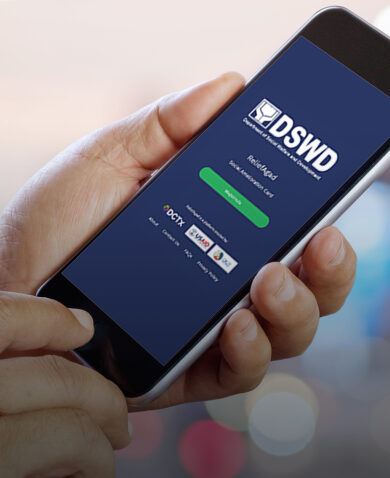
Q&A with Christy Sisko on the Revenue Capital Approach
July 12, 2017 | 4 Minute ReadThe revenue capital approach, which is a method for financing small and medium enterprises that don't have enough collateral for bank loans, is a promising model in emerging markets.
This post is the first of a two-part blog series, originally featured on Microlinks, showcasing a question and answer session with Christy Sisko, technical manager for Asia and Middle East Economic Growth Best Practices at Chemonics, on the revenue capital approach and its revolutionary effect on the small and medium enterprise (SME) financing world. This post is a follow-up piece to Microlinks’ April 25 event, Revenue Capital: Reducing, Rewarding, and Realigning Risk, which explored key features of the revenue capital approach, why it works, and how it can be leveraged to finance SMEs around the world. Click here to access more resources on this emerging topic from the event.
Where is this model working, so that I can point to success cases?
In the limited places where revenue capital is being practiced in emerging and developing markets, it appears to be succeeding, but it is still a relatively recent phenomenon. The SME investor who has been practicing revenue capital the longest, Business Partners Limited (BPL) in South Africa, and its subsidiary Business Partners International (BPI), are proven successes. In addition to BPL and BPI, other funds practicing versions of revenue capital and targeting SMEs in developing markets are shown in the list below. Most of these funds began revenue capital investing after years of investing through other quasi-equity and equity instruments. Of these funds, only BPI and Gazelle Finance launched with the intention of investing primarily through revenue-based instruments. None of these examples practice revenue capital exclusively, although approximately 90 percent of BPI’s investments are royalty-based.
Funds practicing versions of revenue capital and targeting SMEs in developing markets:
- Business Partners Limited with approximately $350 million, focusing on South Africa
- Business Partners International with approximately $60 million, focusing on Kenya, Rwanda, Uganda, Namibia, Malawi, and Zambia
- Tunisian American SME Company with approximately $60 million
- Gazelle Finance Fund with approximately $30 million, focusing on Moldova, Georgia, Kyrgyzstan, and Armenia
- Investisseurs & Partenaires with approximately $80 to 100 million, focusing on sub-Saharan Africa and the Indian Ocean region
- PymeCapital with approximately $8 to 12 million, focusing on Bolivia, Colombia, Nicaragua, and Guatemala
- Grassroots Business Investors Fund with approximately $60 million, focusing on 10 countries and four continents
- Small Enterprise Assistance Funds with approximately $500 million, operating globally within 28 countries
- eXtra Small Medium Large (XSML) with approximately $65 million, focusing on central and West Africa
Could the presenters speak to the investors behind their funds? Are they institutional investors, family foundations, high net worth individuals, etc.? Is the capital stack grants, debt, equity, or other? Is the structure of the fund closed end typical limited partners/general partners, or permanent capital evergreen structure?
The report, “Revenue Capital: A Guide to the Understanding, Promotion, and Implementation of Revenue-Based Finance for Fast-Growth SMEs in the Middle East And North Africa,” published under the USAID Asia and Middle East Economic Growth Best Practices project, covers all aspects of this question, but I will touch on typical investors in funds using the revenue capital structure as well as the favorability of evergreen funds for revenue capital funds.
As is the case with nearly all SME risk capital funds in developing and emerging markets, those practicing revenue capital are almost entirely capitalized by investments from bilateral and multilateral development finance institutions and a small number of private nonprofit organizations. There appear to be no examples of investors in funds practicing revenue capital in developing and emerging markets who have invested for purely return-based reasons. The hope is that as the number of funds using revenue capital instruments increases and have begun to return capital to their investors along with anticipated rates of return, private investors will take revenue capital into the mainstream.
Among the institutions that have invested in revenue capital funds are:
- International Finance Corporation
- European Investment Bank
- African Development Bank
- Mennonite Economic Development Associates (Sarona Risk Capital Fund)
- East African Development Bank
- Netherlands Development Finance Company
- Société de Promotion et de Participation pour la Coopération Economique
- Stichting DOEN (Dutch Government)
- Dutch Good Growth Fund (Dutch Government)
- Swiss Investment Fund for Emerging Markets
The above list does not include the several large multinational South African firms who are the principal shareholders in BPL. For additional information on the organizations listed above and SME risk capital in general, we highly recommend reading New Perspectives on Financing Small Cap SMEs in Emerging Markets: The Case for Mezzanine Finance, commissioned by the Dutch Good Growth Fund and authored by Eelco Benink and Rob Winters.
The evergreen structure appears to be particularly well suited to revenue capital investing. Limited-life venture capital/private equity funds rarely take dividends from their investees, preferring that they reinvest profits in order to grow the size and value of the investee. Typically, such funds do not reach financial “breakeven” until their sixth year, two to four years after they have ceased to make investments. Having little revenue to cover operating costs (the fund management fee) during the first half of the fund’s 10-year life, venture capital/private equity funds typically invest only around 90 percent of the capital invested in the fund.
By contrast, a revenue capital fund will begin to receive revenues in the form of interest and royalty payments from each investment within the first month or quarter after the investment is made. With 80 percent or more of the revenue capital investment in the form of a loan, the revenue capital fund will begin to receive a significant portion of its entire investment through principal payments after a grace period of typically 12 to 18 months. With this pattern of current revenues and “self-liquidation” of the investment during the period of the loan, a revenue capital fund should be able to begin covering its operating costs early in its third year of operations and begin reinvesting revenues shortly thereafter.



























